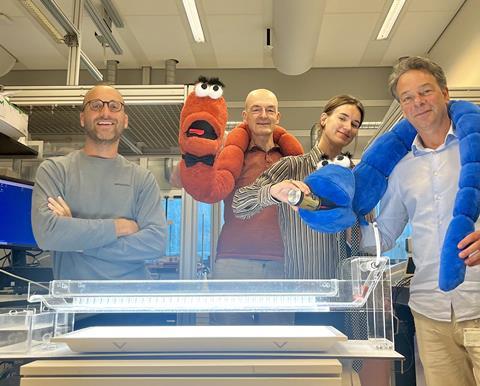The Ig Nobel Prizes were awarded again last night, and Dutch scientists from the University of Amsterdam won the Ig Nobel Prize in Chemistry.
Two years ago, we told you about the remarkable story of how you can do chromatography with tipsy worms. Researchers Tess Heeremans, Antoine Deblais, Daniel Bonn and Sander Woutersen found that the worm Tubifex tubifex could be used as a model for active polymers, as they showed in Science Advances. This remarkable research has won them the Ig Nobel Prize in Chemistry.

‘It was the most fun Friday afternoon experiment we have ever done and a well-deserved Ig Nobel’, says Bonn, professor of complex fluids. ‘Tess had to do these experiments in her dorm room because of the Covid restrictions at the time, and that has just earned us this prize.’
‘It is a great honour,’ says Woutersen, professor of physical chemistry. ‘We flew with the team to MIT, where the award ceremony took place. It is always quite a circus, so we also did an act with talking Muppet worms that my sister made.’ Bonn adds: “With these Muppets, we did a one-minute presentation of what our research was about, which is that you can do chromatography with drunken worms. It was just one big party.’
The research also taught the team a wise life lesson. ‘We let the worms flow gently in a container with small columns’, explains Bonn. ‘When a drunk worm encountered a column, it behaved like a drunkard around a lamppost: it didn’t want to go home. The funny thing was that if a sober worm passed by, the drunken worm would be taken by the sober worm. So, at parties, always make sure someone stays sober!’

In the 2022 article, Woutersen said he was curious to see how the worm experiment would work with active polymers, and encouraged others to try it. ‘But as far as I know, nobody has taken up the challenge yet’, says Woutersen. ‘You see more and more people doing simulations and calculations on these worm systems, however.’ The challenge remains open.
You can watch the team’s performance below.













Nog geen opmerkingen